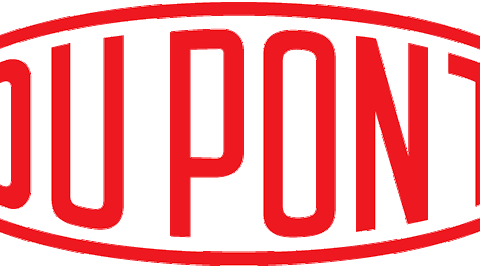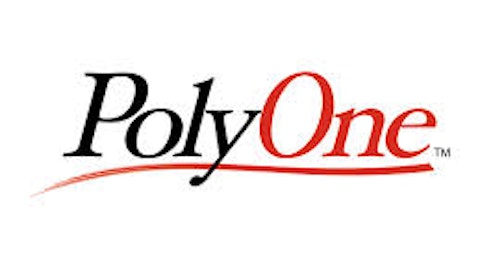Sluggish growth in non-residential construction markets and a weak European economy have compelled chemical businesses to rely on cost-cutting measures to improve the bottom line (rather than revenue-enhancement measures). Moreover, the shale-gas boom has also helped these companies to reduce the costs of production through cheaper raw materials.
However, lately, many investors have perceived that probable improvements from cost-cutting measures have already been baked in the stock prices. Hence, the shale-gas boom and declining raw-material prices might be an obsolete theme to invest into. Is that true? Let’s have a look at three chemical companies that have benefited from declining natural-gas prices.
How has shale gas brought down the cost of production?
Those who have hardly followed the shale-gas boom and its boons and banes across different industries might not be aware of how this phenomenon has benefited the chemical space. The shale-gas boom has produced abundant supplies of ethane, a natural-gas component that is converted to ethylene with heat and pressure in a process known as cracking. Ethylene, then in turn, is used to produce polymers and plastic bags.
A company weathered by declining end markets
With a sizable footprint in Europe, the Middle East and Asia (34% of sales), the ongoing economic challenges have prevented any tangible momentum in The Dow Chemical Company (NYSE:DOW)’s stock price. The stock price has seen only 5% appreciation since the start of the year versus the S&P 500 rising 15%. Moreover, like the US, the agricultural markets in Europe have suffered from cold, wet weather during the key 2Q period. In addition, the disappointing macro trends in China have limited my enthusiasm for Asian performance at Dow, which represents about 20% of sales, including its strong competitive position in electronic chemicals.
Although year-over-year turnaround schedules and propylene price-spike issues are lesser this year, they do exist and will likely clip a few pennies from my 2Q 2013 estimates before giving way to sequential relief in 3Q 2013.
Nevertheless, the Street remains enthusiastic about the investment case for The Dow Chemical Company (NYSE:DOW) as its self-help measures, growing exposure to US natural gas liquid (NGL) feedstock (where prices have remained very attractive) and a strengthening balance sheet provide a platform for increased leverage as the economy improves. Moreover, the Street still senses great investor indifference toward The Dow Chemical Company (NYSE:DOW) with expectations relatively muted suggesting an appealing risk/reward situation if Dow can flex its cost-cutting credentials as the global economy finds better footing.
A shrinking cost benefit
Prior to the earnings season, the Street lowered 2Q 2013 estimates for LyondellBasell Industries NV (NYSE:LYB) to $1.62, from $1.73, accounting for a reduced ethylene-ethane spread as well as lower ethylene prices throughout 2Q. It shouldn’t be forgotten that LyondellBasell Industries NV (NYSE:LYB) produces ethylene. Hence, cheap and abundant supply of ethane (a key raw material in the production of ethylene) has helped companies to bring down their raw-material costs.
Whenever it comes to the shale-gas boom, two of the company’s segments are the most relevant to discuss. They are olefin and polyolefin (O&P) and intermediates and derivatives (I&D). Its O&P business is responsible for production of olefins, polyolefins and polypropylene (PP) compounds. The I&D products include acetyls and ethylene derivatives.
Since the shale gas boom, the raw material prices of both of these segments have been reduced significantly. For example, within the olefins business, the company has increased its NGL cracking capability from 70% in 2010 to 87% in early 2013. Within Europe and Asia, the company believes its base of $350 million to $550 million in EBITDA should remain steady regardless of olefin and polyolefin margin conditions overseas.
However, a narrowing spread between ethylene and ethane prices means that market prices have adjusted for cheap raw-material prices. While this is seen to be a key factor in 2Q, LyondellBasell Industries NV (NYSE:LYB)’s exposure to the recent trends in the polymer market will more than offset this in 3Q/4Q 2013. Adjusting for this polymer margin upside, the full-year estimates for 2013/2014/2015 have been raised to $6.07/$7.31/$8.29, from $6.04/$7.00/$7.97, respectively.
Biggest winner of rising margins in the polymer environment
Goldman Sachs recently raised its 2Q 2013 estimate for Westlake Chemical Corporation (NYSE:WLK) to $2.17, from $2.05, marking to market the estimates as the company is seen as the biggest winner in the current polymer margin environment. Because Westlake has the greatest relative exposure to the polymer production process, with lower exposure than LyondellBasell to the ethylene markets, it will benefit most out in the chemical space to the current polyethylene-ethylene spreads. These margin trends are expected to continue to drive strong earnings in the medium term. Goldman has raised full-year 2013/2014/2015 estimates to $8.52/$9.44/$10.14, from $7.85/$8.92/$9.67, respectively.
Westlake Chemical Corporation (NYSE:WLK)’s polyethylene focus on low-density polyethylene (LDPE) has benefited earnings through the relative higher margins achieved in the product over the past decade. This advantage should continue to widen, as relatively fewer industry capacity additions are planned in LDPE. Likewise, within LDPE, most of the business is geared toward more specialty autoclave LDPE, with limited capacity additions.
The company is also confident on the outlook for its vinyl business. On the vinyl’s side, the company expects global polyvinyl chloride, or PVC markets, to remain tight over the long term, supported by a US housing recovery and export volume.
Final word
It can be deduced from investment theses of different chemical companies that most of the benefits of the shale-gas boom have already been factored in their stock prices. However, there have been some other emerging themes in the sector that have benefited the companies, like rising margins for polymer products. Westlake has been a major beneficiary of this trend.
The article Have the Shale Gas Benefits Been Factored Into the Chemical Space? originally appeared on Fool.com and is written by Zain Abbas.
Zain Abbas has no position in any stocks mentioned. The Motley Fool has no position in any of the stocks mentioned. Zain is a member of The Motley Fool Blog Network — entries represent the personal opinion of the blogger and are not formally edited.
Copyright © 1995 – 2013 The Motley Fool, LLC. All rights reserved. The Motley Fool has a disclosure policy.





